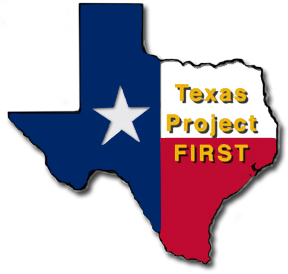en Español • Print • Share
Have you ever used a calculator to balance a checkbook, color coded files to organize bills and receipts, or an electronic organizer to remind yourself of appointments and activities? If you have, then you have used Assistive Technology (AT).
Many children with disabilities use items, equipment and technology to maximize their strengths and help them compensate for weaknesses caused by their disability. A child may use a slant board to assist for writing skills, a talking calculator when working on math, or a cup with a cut-out rim for drinking. When documented in the child’s IEP, these items, pieces of equipment and technology are considered Assistive Technology.
IDEA (2004) defines Assistive Technology as both a “device” and a “service.”
An Assistive Technology device is “any item, piece of equipment, or product system, whether acquired commercially off the shelf, modified, or customized, that is used to increase, maintain, or improve the functional capabilities of a child with a disability.” It may be as simple as an adaptive grip for a pencil; or it can involve highly advanced technology, such as voice recognition software.
Regardless of its simplicity or complexity, Assistive Technology is intended to ensure that a child with a disability receives a free and appropriate public education (FAPE) with access to the general educational curriculum and settings, to provide opportunities to participate with peers, and to enable progress toward his/her educational goals. Assistive Technology can also significantly contribute to a child’s independence, self-expression, self-esteem, and overall quality of life.
An Assistive Technology service, as defined by IDEA, is “any service that directly assists a child with a disability in the selection, acquisition, or use of an assistive technology device.”
An Assistive Technology service would include:
- an evaluation of needs, including a functional evaluation
- purchasing, leasing, or acquiring assistive technology devices
- selecting, designing, fitting, customizing, adapting, applying, maintaining, repairing, or replacing an Assistive Technology device(s)
- coordinating with other therapies, interventions, or services with assistive technology devices
- training or technical assistance for the student with a disability, and if appropriate, the student’s family
- training or technical assistance for school professionals
Is all technology considered Assistive Technology?
No. Technology is considered “Assistive Technology” when the use of the technology increases, maintains, or improves the functional abilities of a child with a disability. Although a computer key board is a form of technology, it would not be considered an assistive technology device unless it increases, maintains, or improves the student’s functional capability to write or communicate.
IDEA clearly excludes all “surgically implanted devices” in its definition of Assistive Technology. Also excluded is a “person” who may act as a scribe for a student who has difficulty writing.
Medically Related Services and Devices
The IDEA excludes medical services, except for those for diagnostic or evaluative purposes, from the definition of related services; but some services that may seem medical, are actually related services or AT services. In addition, the obligation to provide medically related AT devices, rather than services is unclear. Due to the complexity of this issue – we would like to refer you to the Texas Assistive Technology Legal module.
What Parents Need to Know
- Any assistive technology devices that are deemed necessary (by the student’s ARD committee) to ensure FAPE must be provided at no cost to the parents, and the parents cannot be charged for normal use, wear and tear.
- A school district is not required to provide a student with the best or highest technology available, but technology that provides some meaningful educational benefit.
- When documenting the need for AT in the student’s IEP, additional information should also be documented, such as the type of AT to be used, any training that is needed, the time frame for which data on the use of AT will be reviewed for progress, and the time frame for which the AT will be used.
- There is a process for Considering AT for all students receiving special education or related services – it is not merely a checkbox on the IEP
See Also:
- Assistive Technology Consideration
- Implementation and Evaluation
- AT – Other Issues
- Technology Resources
